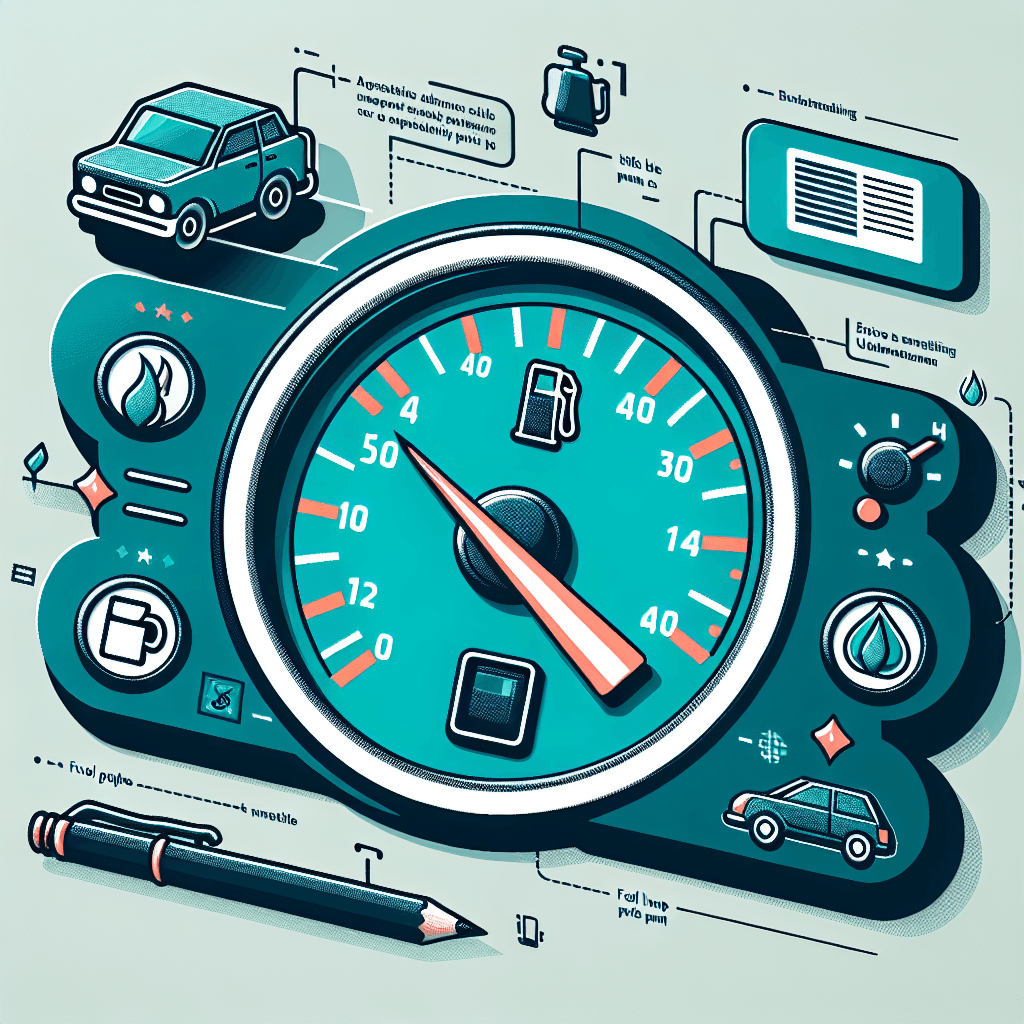What is the purpose of that little arrow on your car's fuel gauge
Ever pulled up to the wrong side of the pump? That tiny, overlooked arrow on your fuel gauge is a brilliantly simple secret that will save you from that frustration forever.


Too Long; Didn't Read
The arrow on your fuel gauge points to the side of your car where the gas cap is located.
Solved: What is the Purpose of That Little Arrow on Your Car's Fuel Gauge?
You pull into a gas station in a new rental car, ready for a quick fill-up. You get out, grab the pump, and then it hits you—the moment of mild panic and frustration. Which side is the fuel door on? You crane your neck, check the side mirrors, and might even do the "walk of shame" around the car to find it. We've all been there. But what if your car has been telling you the answer all along? Hiding in plain sight on your dashboard is a tiny, often-overlooked symbol designed to solve this exact problem. This post will demystify that small but mighty arrow on your car's fuel gauge and explain its surprisingly clever origin.
The Big Reveal: What Does the Arrow Mean?
The purpose of the small arrow or triangle next to the gas pump icon on your fuel gauge is brilliantly simple: It points to the side of the car where the fuel door is located.
- Arrow pointing left (<): Your fuel door is on the driver's side (in left-hand-drive countries like the U.S.).
- Arrow pointing right (>): Your fuel door is on the passenger's side.
This feature is a perfect example of elegant design—a simple, universal symbol that communicates essential information without needing a single word. It saves you the guesswork and frustration of remembering which side to pull up to the pump, a particularly useful feature when driving an unfamiliar vehicle, whether it's a rental, a friend's car, or a new purchase.
A Brief History of a Clever Idea
This helpful indicator wasn't always a standard feature. For decades, drivers were left to their own devices. The credit for this ingenious solution goes to a Ford Motor Company designer named Jim Moylan. In the mid-1980s, Moylan observed people struggling to find the fuel door on rental cars and saw an opportunity for a simple fix. He proposed adding a small triangular arrow to the fuel gauge icon to indicate the correct side.
Ford implemented his idea, and the feature first appeared on the 1989 Ford Escort and Mercury Tracer.
What started as a thoughtful design tweak on a couple of models proved so popular and practical that other automakers began to adopt it. Over the next decade, the arrow became an increasingly common, though not legally mandated, industry convention. Today, you'll find it on the vast majority of modern vehicles from manufacturers around the world.
Why Doesn't My Car Have One?
While incredibly common, the fuel gauge arrow is not a universally required feature. If your car doesn't have one, it's likely for one of a few reasons:
- It's an older model: Most cars manufactured before the mid-1990s will not have this indicator.
- Alternative design: Some manufacturers, particularly in the past, used other visual cues. For example, some older Mercedes-Benz or Volkswagen models designed the icon itself to give a clue, where the hose on the pump symbol would be on the same side as the fuel door.
- Manufacturer's choice: Since it isn't a regulated safety feature, a car company can simply choose to omit it, though this is rare in new cars today.
Is There a Rhyme or Reason to Fuel Door Placement?
You might wonder why car companies don't just standardize the location of the fuel door. The placement is often a result of engineering decisions related to the chassis layout, fuel tank design, and a bit of regional philosophy. Generally, many European and Japanese brands place the fuel door on the passenger side (the right side in the U.S.), theoretically to keep the driver safely away from traffic at curbside fueling stations. American manufacturers have historically been less consistent. This lack of standardization is precisely what makes Jim Moylan's little arrow such a universally helpful invention.
In conclusion, that small arrow on your fuel gauge is more than just a random dashboard marking; it's a piece of thoughtful design history. It serves as a simple and effective "gas cap compass," a silent helper created to solve a common driver frustration. By pointing directly to your fuel door, it eliminates guesswork and makes refueling a smoother process, especially in an unfamiliar car. The next time you get behind the wheel, take a moment to appreciate this clever little detail—a small solution that makes a big difference.
More Articles

Why do movie punches sound so much crunchier and louder than real ones?
That sickening, bone-crunching punch you hear in the movies is a lie, and the secret ingredient is probably sitting in your refrigerator right now.

What makes a beer bottle suddenly foam over just from a light tap on top?
It’s not magic, it’s a shockwave; discover the explosive physics that turns a gentle tap on your beer bottle into an instant foamy geyser.

Why do police officers touch the back of a car during a traffic stop?
It’s not a random habit; that simple touch is a calculated, old-school tactic designed to leave a crucial and potentially life-saving piece of evidence behind.